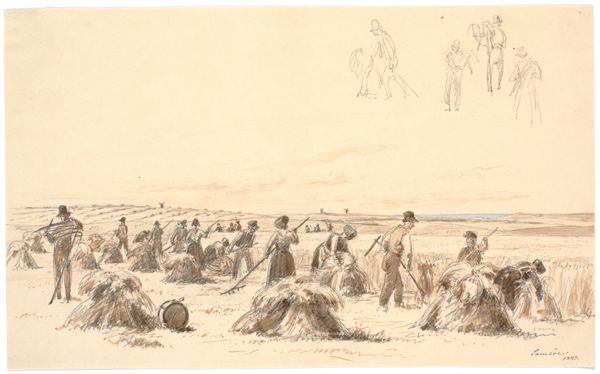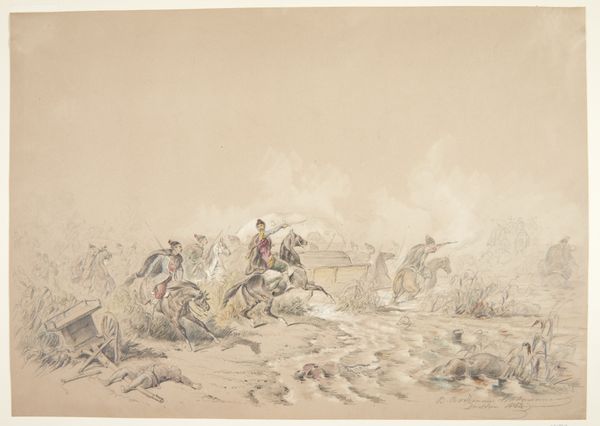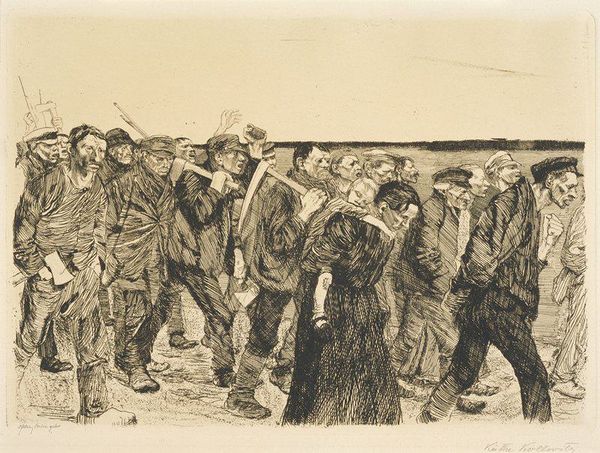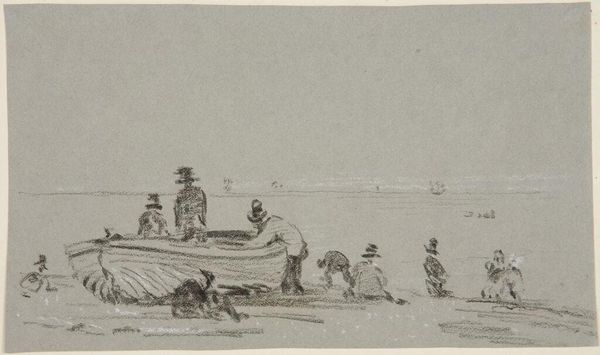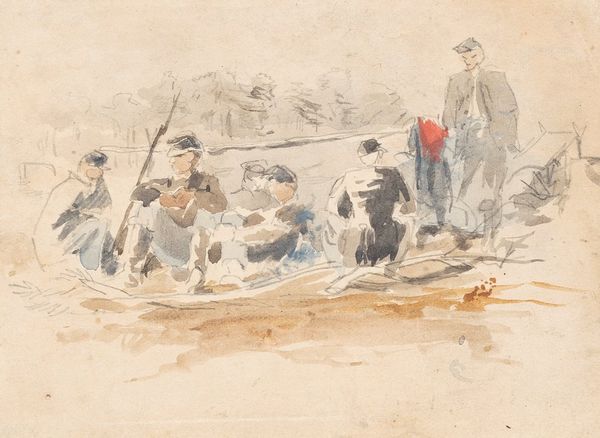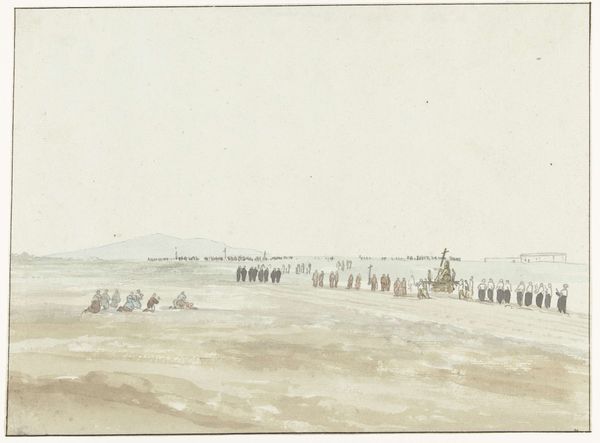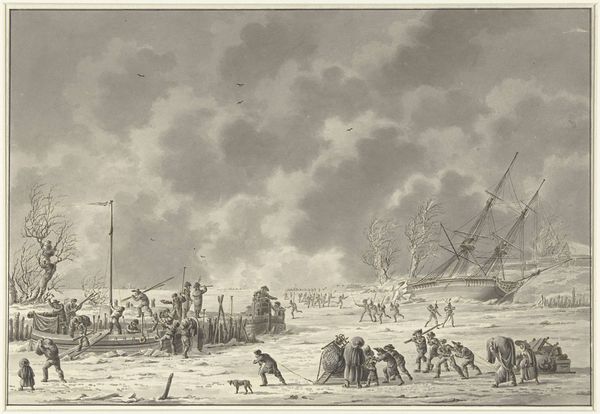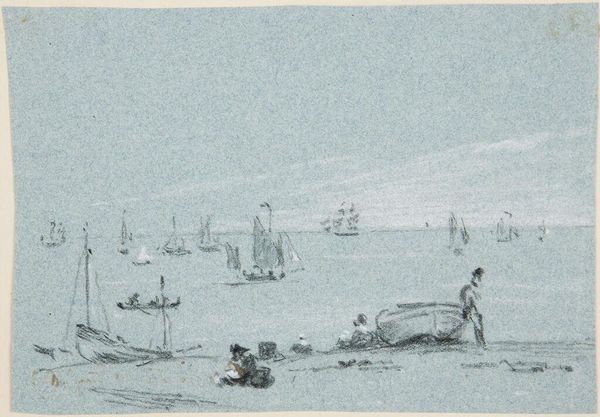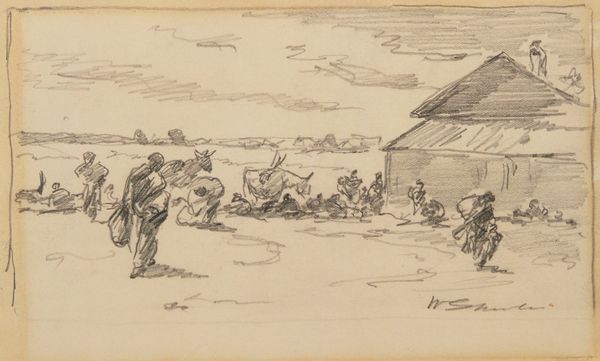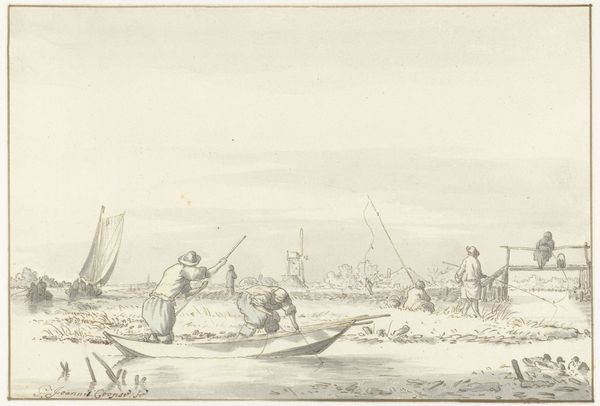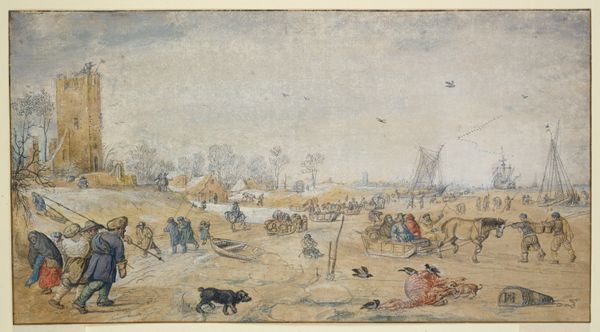
drawing, plein-air
#
drawing
#
plein-air
#
landscape
#
romanticism
#
genre-painting
Dimensions: 252 mm (height) x 398 mm (width) (bladmaal)
Curator: Standing before us is a drawing by Martinus Rørbye titled "Høstarbejdere på marken," or "Harvest Workers in the Field," created in 1847. It is part of the collection at the SMK, the National Gallery of Denmark. Editor: My eye is immediately drawn to the repeated verticality—the bundled wheat shocks creating a sort of rhythmic pattern across the field. There’s a curious stillness amidst what must have been a very active scene. Curator: Rørbye, known for his Romantic sensibilities and keen observations, here gives us insight into rural Danish life. Drawings and sketches made 'en plein air,' such as this, captured a moment but also documented societal conditions. You’ll notice the social strata reflected by the figures overseeing the work. Editor: True. And it is the way that Rørbye subtly introduces these societal dynamics into a primarily landscape composition that really intrigues me. Note how the church steeple mimics the upright wheat bundles, while the human figures occupy this in-between space. There's a structural tension here—the landscape, labor, and societal institutions all given equal weight. Curator: The inclusion of the church grounds in the background acts as a symbol of societal order and perhaps alludes to the influence of religion and the feudal structure in Danish agrarian society at the time. Also of interest are the lighter sketching strokes visible above the laborers, it gives us insight into the preliminary work. Editor: That sketch layering certainly draws one’s attention, doesn't it? He doesn't conceal it, but uses those pale figures to open a sort of translucent space at the upper edge. These etherealized figures provide a striking counterpoint to the workers’ grounded activity, perhaps referencing both labor and aspiration within the painting’s symbolic framework. Curator: It’s this unique confluence of observations and visual cues which render "Harvest Workers in the Field" particularly compelling—it isn't simply a depiction of landscape, but the layering of multiple stories about nineteenth century Danish culture. Editor: Absolutely, a subtle dance of labor, land, and institutions visualized with careful structure. A work of visual restraint, to be sure, but formally rewarding with further consideration.
Comments
No comments
Be the first to comment and join the conversation on the ultimate creative platform.
